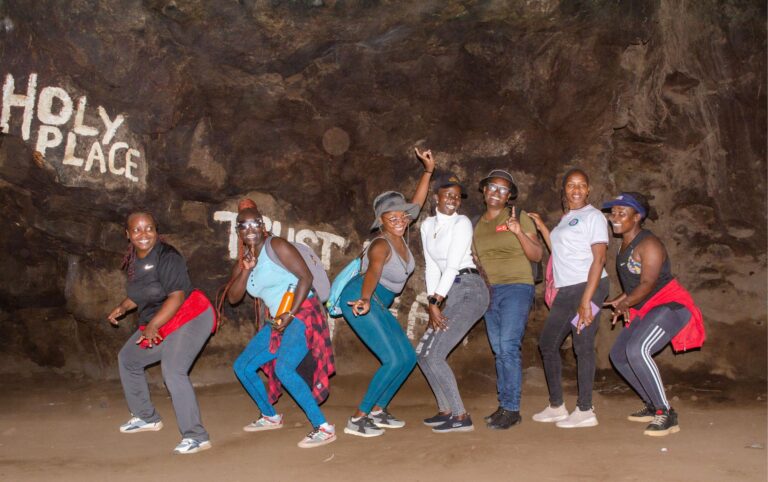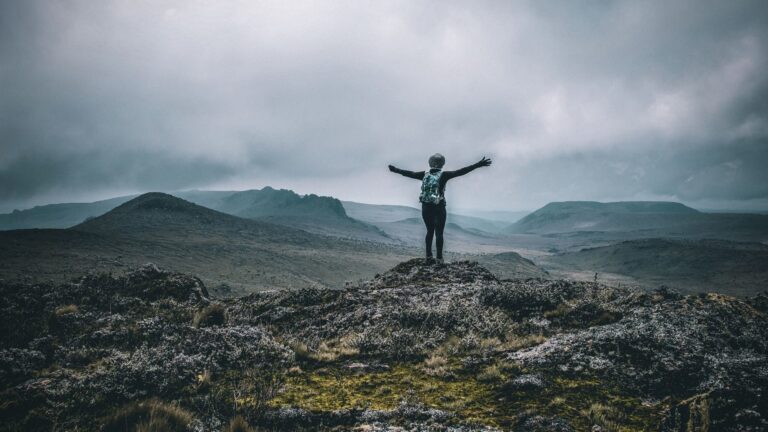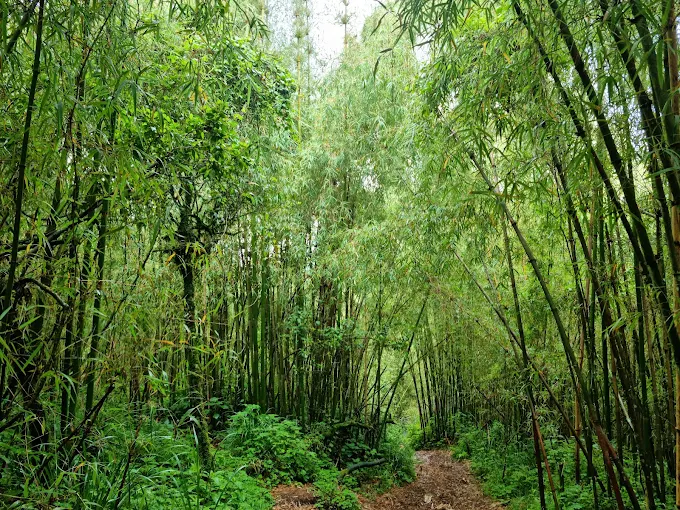Mountain climbing in Kenya offers an unparalleled blend of thrilling ascents, breathtaking landscapes, and rich cultural experiences. At Joe Photography and Safaris, we specialize in crafting unforgettable journeys that not only challenge your limits but also provide ample opportunities to capture the stunning beauty of Kenya’s highlands through your lens.
Table of Contents
Top 5 Mountains for Mountain Climbing in Kenya
Mount Kenya
Dominating the Kenyan skyline, Mount Kenya stands as Africa’s second-highest peak, reaching an elevation of 5,199 meters (17,057 feet). This ancient stratovolcano boasts three main peaks: Batian, Nelion, and Point Lenana. While Batian and Nelion present formidable challenges suited for seasoned climbers, Point Lenana offers a more accessible summit for trekkers seeking a rewarding experience without technical climbing. The mountain’s diverse ecosystems, ranging from lush forests to alpine meadows, provide a visual feast for photographers aiming to capture the essence of Africa’s natural beauty.
Diverse Routes to Explore
Mount Kenya offers several routes, each presenting unique landscapes and challenges:
- Naro Moru Route: Known for being the quickest path to Point Lenana, this route is popular among trekkers aiming for a swift ascent. The trail begins in dense rainforests, transitions through the infamous “Vertical Bog,” and culminates in the alpine desert zone. While expedient, the rapid altitude gain necessitates careful acclimatization to prevent altitude sickness.
- Chogoria Route: Celebrated for its scenic beauty, the Chogoria route features lush forests, highland moors, and the picturesque Lake Michaelson. This path offers a more gradual ascent, allowing climbers to acclimatize effectively while enjoying the diverse flora and fauna. The breathtaking vistas along this route make it a favorite among photographers seeking to capture Kenya’s varied landscapes.
- Sirimon Route: Offering a gradual ascent through diverse ecosystems, the Sirimon route is favored for its acclimatization benefits and stunning views. The trail passes through ancient forests and open moorlands, providing opportunities to observe unique wildlife and plant species endemic to the region.
Each route presents distinct photographic opportunities, from the dense, misty forests teeming with wildlife to the stark, rugged beauty of the alpine zones. Capturing the transition between these ecosystems can add depth and narrative to your photographic portfolio.
While Mount Kenya stands as the centerpiece of mountaineering in Kenya, the country offers a plethora of other remarkable climbing experiences. Each destination presents unique challenges and rewards, catering to both adventurers and photographers alike. Below is an in-depth exploration of these notable peaks, complete with specific details such as altitude, terrain, and photographic opportunities.
Aberdare Range
- Altitude: The Aberdare Range’s highest peaks are Ol Donyo Lesatima at approximately 4,001 meters (13,126 feet) and Kinangop at about 3,906 meters (12,815 feet).
- Terrain and Climbing Experience: This range is characterized by lush montane forests, deep ravines, and cascading waterfalls. The trails meander through dense vegetation, offering moderate climbs that are both invigorating and accessible. The rich biodiversity and the interplay of light filtering through the dense canopy make the Aberdare Range a haven for nature photographers.
Mount Elgon
- Altitude: Mount Elgon’s highest peak on the Kenyan side is Koitobos, standing at 4,222 meters (13,851 feet).
- Terrain and Climbing Experience: Straddling the Kenya-Uganda border, Mount Elgon features the world’s largest volcanic caldera, spanning about 40 kilometers (25 miles) in diameter. The mountain offers less crowded trails, providing a serene climbing experience. Unique features include vast caves formed by ancient lava tubes and hot springs, which serve as intriguing subjects for photography, capturing the intersection of geological wonders and cultural significance.
Mount Longonot
- Altitude: Mount Longonot rises to 2,776 meters (9,108 feet) above sea level.
- Terrain and Climbing Experience: Located in the Great Rift Valley, Mount Longonot is a dormant stratovolcano. The ascent is relatively short but steep, leading climbers to the crater rim. The panoramic views of the Rift Valley and the expansive crater, approximately 8 kilometers (5 miles) in circumference, are spectacular. The summit offers ample opportunities for landscape photography, especially during sunrise and sunset when the lighting accentuates the dramatic topography.
Mount Suswa
- Altitude: Mount Suswa stands at 2,356 meters (7,730 feet) above sea level.
- Terrain and Climbing Experience: Mount Suswa is a unique shield volcano located between Narok and Nairobi. It features a distinctive double caldera with a moat-like inner crater surrounding a tilted block of rock. The mountain is also renowned for its extensive network of lava caves on the northeastern side of the outer crater. Climbing Mount Suswa involves traversing rugged terrain, with trails that are not always well-defined, adding to the sense of adventure. The ascent offers expansive views of the Great Rift Valley and opportunities to explore the volcanic formations up close. Photographers will find the interplay of light and shadow within the caves, as well as the panoramic vistas from the summit, particularly captivating.
Ngong Hills
- Altitude: The highest peak of the Ngong Hills reaches approximately 2,460 meters (8,071 feet).
- Terrain and Climbing Experience: Situated close to Nairobi, the Ngong Hills consist of a series of peaks that provide ideal conditions for day hikes. The trails offer panoramic views of the Great Rift Valley to the west and Nairobi to the east. The consistent breezes and rolling landscapes make for a pleasant climb. The expansive skies and undulating terrain present excellent opportunities for capturing the essence of Kenya’s highlands through photography.
Each of these destinations contributes uniquely to the diverse tapestry of mountain climbing experiences available in Kenya. Whether you’re seeking challenging ascents, serene treks, or unparalleled photographic opportunities, Kenya’s mountains offer something for every adventurer.
Seasons and Climate for Mountain Climbing in Kenya
Kenya’s equatorial location allows for year-round climbing, but optimal conditions vary by season:
- June to October: Ideal for routes on the northern side of Mount Kenya, with stable weather and clear skies. This period coincides with the dry season, offering favorable conditions for trekking and photography.
- December to February: Best for southern routes, offering favorable conditions for technical climbs. The weather during these months is typically dry and stable, providing clear views and excellent lighting conditions for photography.
Understanding these seasonal variations is crucial for planning your expedition to ensure both safety and optimal photographic opportunities.
Preparing for Your Mountain Climbing in Kenya
Successful mountain climbing in Kenya requires thorough preparation:
- Physical Fitness: Engage in regular cardiovascular and strength training exercises to build endurance and muscle strength. Climbing at high altitudes demands a high level of fitness, and preparation should begin several months before your expedition.
- Acclimatization: Plan for gradual ascents and include rest days to adapt to higher altitudes, reducing the risk of altitude sickness. Incorporating acclimatization hikes into your itinerary can enhance your body’s ability to adjust to reduced oxygen levels.
- Gear and Equipment: Invest in quality gear suitable for varying weather conditions, including layered clothing, sturdy boots, and reliable camping equipment. For photographers, protecting your equipment from the elements is essential; consider waterproof bags and lens covers.
- Guides and Permits: Hiring experienced guides is essential for navigation and safety. Ensure all necessary permits are secured before your expedition. At Joe Photography and Safaris, we facilitate these arrangements, allowing you to focus on the climb and capturing stunning images.
- Health Precautions: Consult with a healthcare provider regarding necessary vaccinations and medications. Carry a basic first aid kit and familiarize yourself with its use. Staying hydrated and maintaining a balanced diet during the climb are also crucial for health and performance.
🏞️ Ready to Conquer New Heights? 🏔️
🚀 Join Joe Photography and Safaris for thrilling hiking adventures across Kenya! Meet new friends, explore breathtaking trails, and create unforgettable memories. 🌿✨
🎒 Join Our Hiking WhatsApp Group 🚀Hikes. Adventures. Friendships. Memories. 🌍
Capturing the Journey During Mountain Climbing in Kenya
At Joe Photography and Safaris, we believe that every climb is a story waiting to be told. Our tailored expeditions provide not only the thrill of the ascent but also the opportunity to document your journey through photography. From the golden hues of sunrise over the peaks to the vibrant flora and fauna along the trails, Kenya’s mountains offer a photographer’s paradise.
Capturing the Essence of Mount Kenya
Mount Kenya, Africa’s second-highest peak, presents an array of photographic opportunities that evolve with each step of the ascent. The journey begins in the lush montane forests, where towering trees and dense undergrowth create a rich tapestry of green. Here, photographers can capture the interplay of light and shadow as sunlight filters through the canopy, illuminating the vibrant flora and the occasional glimpse of wildlife such as colobus monkeys or forest elephants.
As you ascend, the landscape transitions to the bamboo zone, characterized by tall, slender stalks that sway gently in the mountain breeze. This area offers unique compositional opportunities, with the repetitive patterns of bamboo creating a natural rhythm in your images. The mist that often envelops this zone adds an ethereal quality, enhancing the mood of your photographs.
Higher up, the alpine moorlands unfold, revealing a stark yet captivating environment dotted with giant lobelias and groundsels. The dramatic silhouettes of these endemic plants against the backdrop of rugged peaks and expansive skies provide compelling subjects. The moorlands also offer panoramic vistas, allowing photographers to capture the grandeur of the mountain’s vastness.
Reaching the summit at Point Lenana during sunrise is a moment of unparalleled beauty. The first light of day bathes the surrounding peaks in warm, golden hues, casting long shadows and highlighting the textures of the rocky terrain. This magical hour presents an ideal opportunity to capture the awe-inspiring majesty of Mount Kenya, with the horizon stretching endlessly and the plains below gradually coming into view.
Diverse Subjects Along the Trails
Beyond landscapes, the trails of Mount Kenya are teeming with diverse subjects that make for captivating photography. The mountain’s unique ecosystems are home to a variety of wildlife, including sunbirds flitting among alpine flowers and hyraxes basking on sunlit rocks. Capturing these creatures in their natural habitat adds a dynamic element to your photographic narrative.
The changing weather patterns on the mountain also offer dramatic scenes. Cloud formations rolling over peaks, sudden bursts of sunlight piercing through stormy skies, and the serene stillness after a brief mountain shower all contribute to a rich tapestry of atmospheric conditions that can be artistically captured.
Tailored Expeditions for Photographers
Understanding the unique needs of photographers, Joe Photography and Safaris designs expeditions that prioritize ample time at key locations, allowing for unhurried composition and exploration of different lighting conditions. Our experienced guides are attuned to the rhythms of the mountain and the desires of photographers, ensuring that you are positioned at the right place at the right time to capture those fleeting moments of natural splendor.
Whether you’re aiming to document the intricate details of endemic plant species, the grandeur of sweeping landscapes, or the candid moments of camaraderie among fellow climbers, our expeditions provide the flexibility and support to fulfill your creative vision.
Activities During Mountain Climbing in kenya
Mountain climbing in Kenya offers adventurers a rich tapestry of experiences that extend well beyond the ascent itself. The country’s diverse landscapes and cultural heritage present a variety of activities to enhance your journey. Here are some pursuits to consider during your Kenyan mountain adventure:
1. Wildlife Observation
Kenya’s mountainous regions are teeming with wildlife, providing climbers with the opportunity to encounter various species in their natural habitats.
- Mount Kenya National Park: As you ascend, you’ll traverse different vegetation zones, each offering unique scenery and wildlife sightings, including buffaloes, elephants, and elands.
2. Bird Watching
For bird enthusiasts, Kenya’s mountains serve as sanctuaries for diverse avian species.
- Mount Kenya National Park: The park is home to numerous bird species, making it a prime location for bird watching amidst the climb.
3. Rock Climbing
For those seeking a technical challenge, certain peaks offer opportunities for rock climbing.
- Mount Kenya: The majority of climbs involve rock climbing via the easiest route, although some only require a scramble or a walk. The highest peak that can be ascended without climbing is Point Lenana, at 4,985 meters (16,355 feet).
4. Exploring Geological Formations
Kenya’s volcanic mountains boast unique geological features worth exploring.
- Mount Suswa: Known for its extensive network of lava caves, Mount Suswa offers climbers the opportunity to delve into these fascinating formations, providing insight into the region’s volcanic activity.
5. Cultural Interactions
Engaging with local communities enriches the climbing experience, offering insights into indigenous cultures and traditions.
- Mount Kenya Region: Interacting with local communities around Mount Kenya provides cultural insights and enriches the climbing experience.
6. Team Building Activities
Some lodges near climbing destinations offer team-building exercises that foster camaraderie and prepare groups for the collaborative aspects of mountain climbing.
- Naro Moru River Lodge: Activities like wall climbing, tug-of-war, and log balancing are prepared for team-building purposes, enhancing group dynamics before or after the climb.
7. Nature Photography
The diverse landscapes, flora, and fauna encountered during the climb present ample opportunities for photography.
- Mount Longonot: The panoramic views of the Rift Valley and the crater itself are spectacular, providing ample opportunities for landscape photography.
8. Camping Under the Stars
Spending nights in mountain campsites allows climbers to experience the tranquility of the wilderness and offers stargazing opportunities away from urban light pollution.
- Mount Kenya: Camping along the ascent routes provides a serene environment to rest and acclimatize, with clear night skies offering breathtaking stargazing experiences.
9. Environmental Conservation Activities
Participating in conservation efforts during your climb contributes to the preservation of these natural wonders.
- Mount Kenya: Engaging in activities such as trail clean-ups or tree planting initiatives helps maintain the ecological balance and ensures that the beauty of the mountains is preserved for future generations.
Incorporating these activities into your mountain climbing expedition in Kenya transforms the journey into a holistic adventure, blending physical challenges with cultural, educational, and recreational experiences. Whether you’re navigating the rugged terrains of Mount Kenya or exploring the lava caves of Mount Suswa, each activity adds a unique dimension to your adventure, creating memories that extend beyond the summit.
FAQ on Mountain Climbing in Kenya
Mountain climbing in Kenya offers a blend of adventure, natural beauty, and cultural experiences. To help you prepare for your expedition, here are five frequently asked questions:
How long does it take to climb Mount Kenya?
The duration of a Mount Kenya climb varies based on the chosen route and the climber’s experience. Typically, reaching Point Lenana, the trekking summit, requires about four days. For technical climbs to peaks like Batian or Nelion, a minimum of six days is recommended.
What is the best time of year to climb mountains in Kenya?
The optimal climbing seasons are typically during the dry months: January to March and June to October. During these periods, the weather is more stable, providing safer and more enjoyable climbing conditions.
Do I need a permit to climb mountains in Kenya?
Yes, permits are required to climb most mountains in Kenya, including Mount Kenya. These can be obtained through the Kenya Wildlife Service or authorized tour operators. The fees contribute to conservation efforts and maintenance of the parks.
What level of fitness is required for mountain climbing in Kenya?
A good level of physical fitness is essential. Climbs often involve long treks at high altitudes, which can be physically demanding. Regular cardiovascular and strength training exercises are recommended in preparation for your climb.
Are there age restrictions for climbing mountains in Kenya?
While there’s no official age limit, climbers should be in good health and physical condition. Minors should be accompanied by adults, and it’s advisable to consult with a physician before the climb.
What should I pack for a mountain climbing expedition in Kenya?
Essential items include layered clothing to accommodate temperature changes, sturdy hiking boots, a sleeping bag suitable for cold conditions, a first-aid kit, and sufficient water purification means. A detailed packing list should be provided by your tour operator.
For more detailed information and to plan your mountain climbing adventure, feel free to contact Joe Photography and Safaris. We’re here to ensure your experience is safe, enjoyable, and unforgettable.



